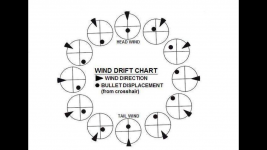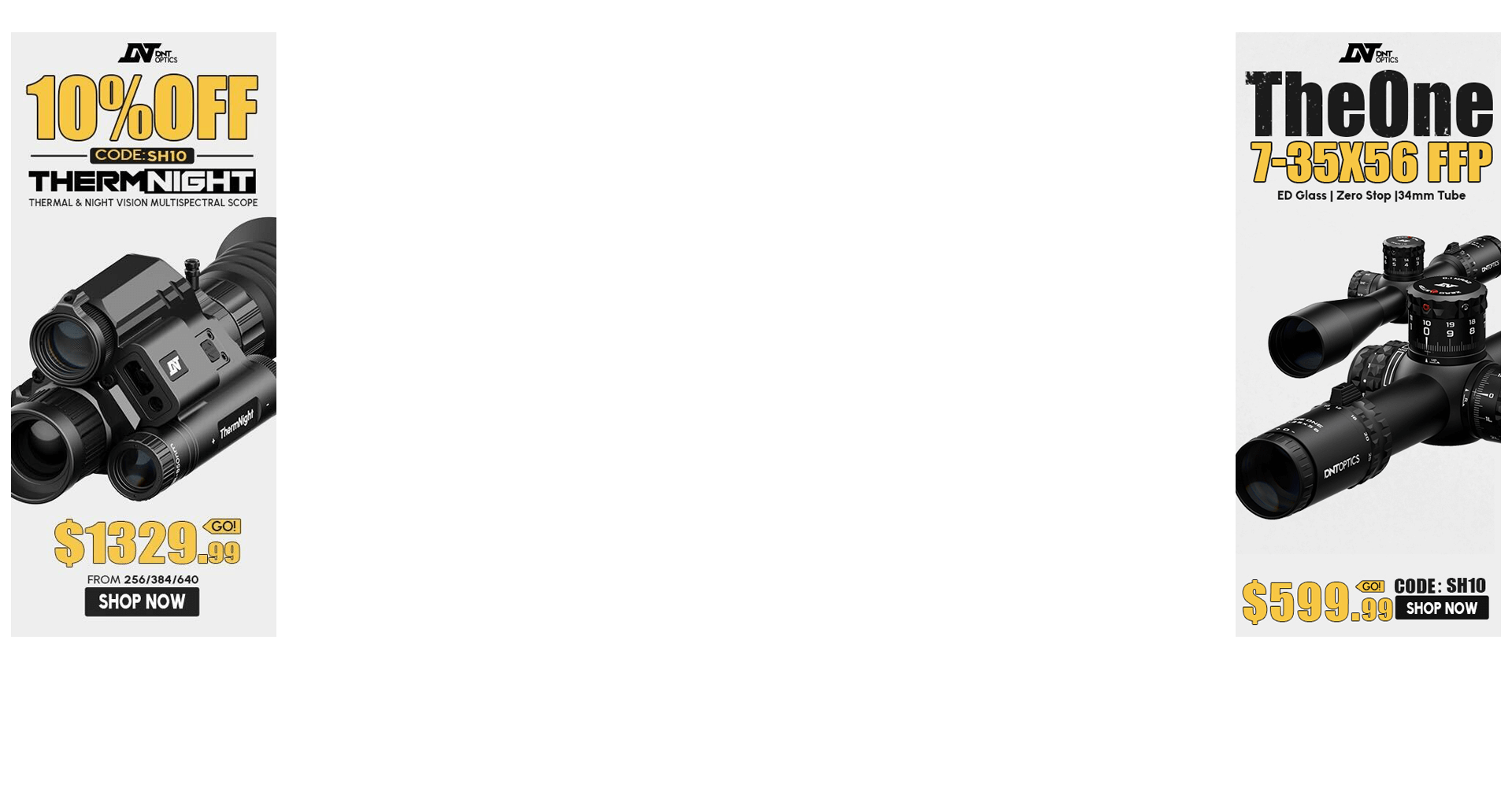By Ted Hoeger “@Jack Master”
Gone are the days of doing long mental math on the shooting line or in the field. Ballistic calculators have advanced shooting to a new level that make things easy on the brain. The only downfall to a ballistic computer is being able to adjust to changing wind direction and speed quickly. As a shooter, the ability to read the wind and make quick adjustments will increase our hit percentages. Using a ballistic computer to look up two wind values from 2 directions can be long and tedious. If you have the time and opportunity, a ballistic computer is usually your best solution, but what about when you don’t have a ballistic computer, are in a place electronics don’t work or need a faster method? We are shooting further at smaller targets than ever, so having a solid starting wind call is a must.
A Quick Wind Lesson
When making wind calls, we need to know the crosswind speed. We need to know how much of the wind blowing at an angle to our line of fire will affect the bullet’s path. A wind at 3 and 9 o’clock position will have a full value (use the measured wind speed). Wind at 12 and 6 o’clock will not affect our bullet path and have no wind hold. Wind from any other angle will need to ‘turn’ into the crosswind value. In the diagram below are the two values any wind can be broken down into: wind at our face (or back) and the crosswind value. We always want to determine the crosswind portion.
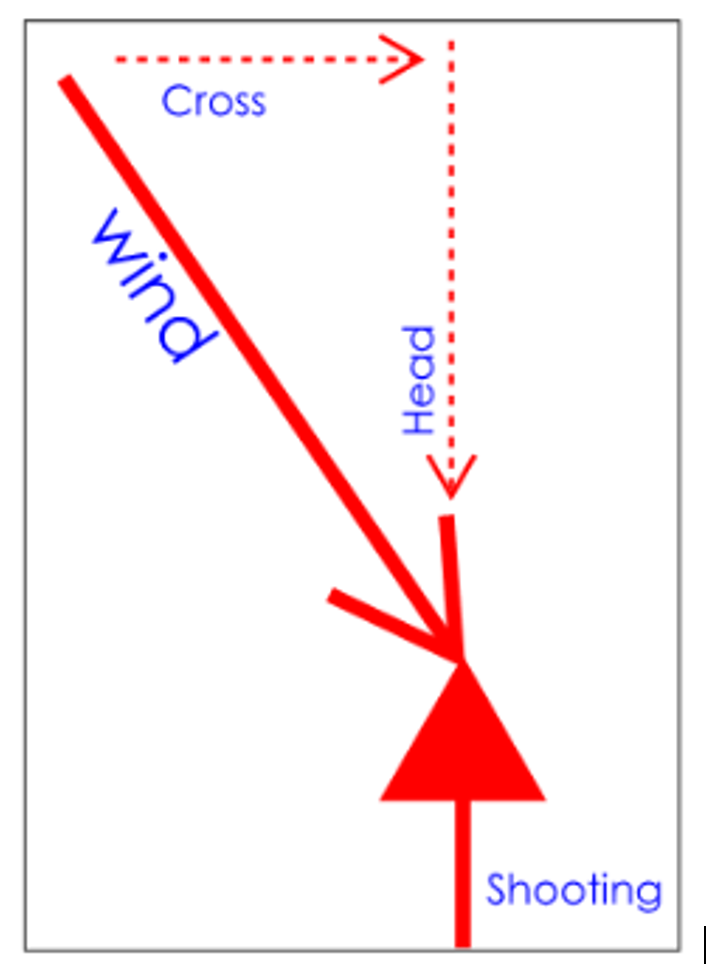
Enter the Ol’ trusty wind rose.
We use a wind rose to determine our cross wind value. By multiplying the full wind speed by the wind rose value we get the cross wind value.
Example – a wind at 10:30 o’clock is a “half value” wind, therefore a 12 mph wind at 10:30 o’clock has a crosswind value of 6mph. (12mph x 0.5 = 6mph)
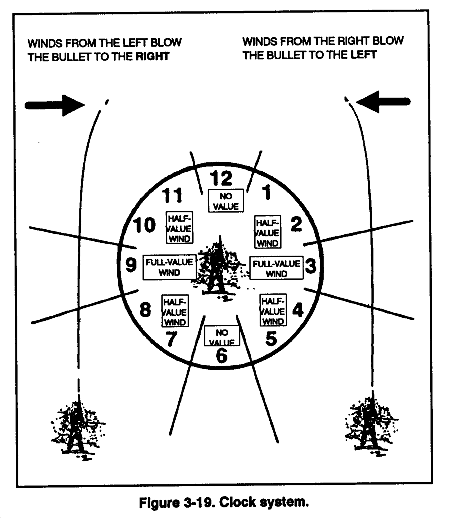
This chart shows simple “No Value”, “Half Value”, and “Full Value” directions which gives us a broad starting point and a wide angle range for each value. In the days when a 400 yard shot was considered your effective range, the old wind roses that grossly rounded the wind values and directions were applicable. Combine this original wind rose with large target sizes and we have a work-able combination. Wind roses like the one above used to get the job done. As we started shooting greater distances, we needed to refine our wind solution for those distant targets or for smaller targets.
A progression of the basic chart gives us a more refined solution.
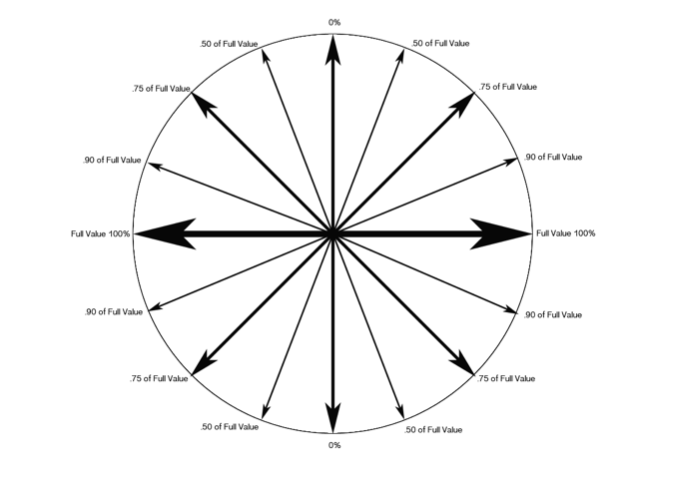
This wind rose gives us a defined direction with each wind value. We can now estimate between the shown directional arrows and make minor adjustments as needed. Having a rough estimate of 50%, 75% and 90% and their directions will enable us to easily memorize and calculate them mentally. We’ll have a better solution than the original wind rose.
A wind rose applicable to modern precision rifle shooting will need to be much more detailed than previously available. The old roses were designed for very quick use in a very short time and served their duty well. In the precision rifle world, we have gained time and opportunity with farther distances. We have also reduced the amount of error allowed in our wind calls to make first round impacts on the smaller targets that are farther away.
The “Cross Wind Value” Chart
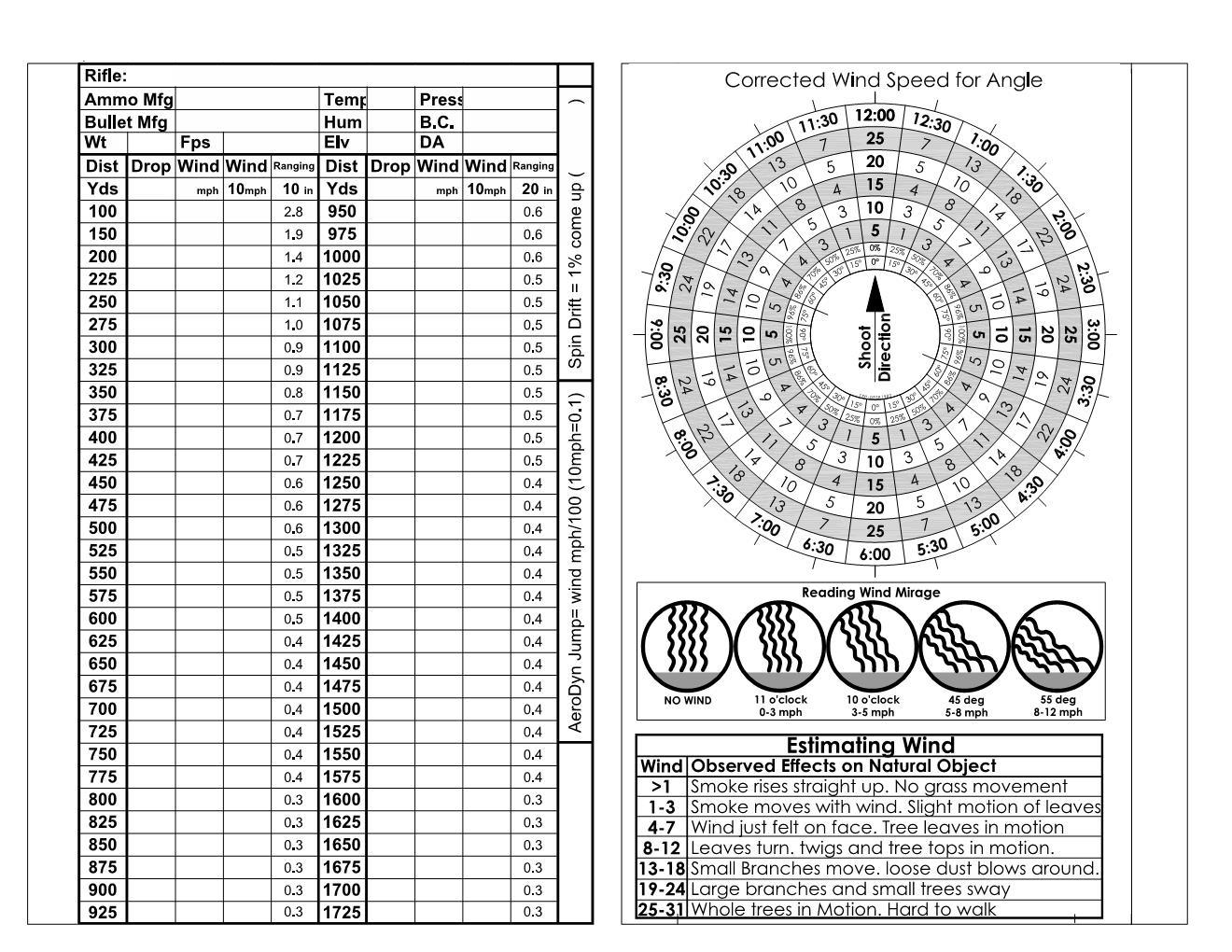
Here is the Cross Wind Value Chart. Yes, a “chart” rather than a “rose”. I call it a chart because it gives numerical values for several data points rather than just a rough percentage.
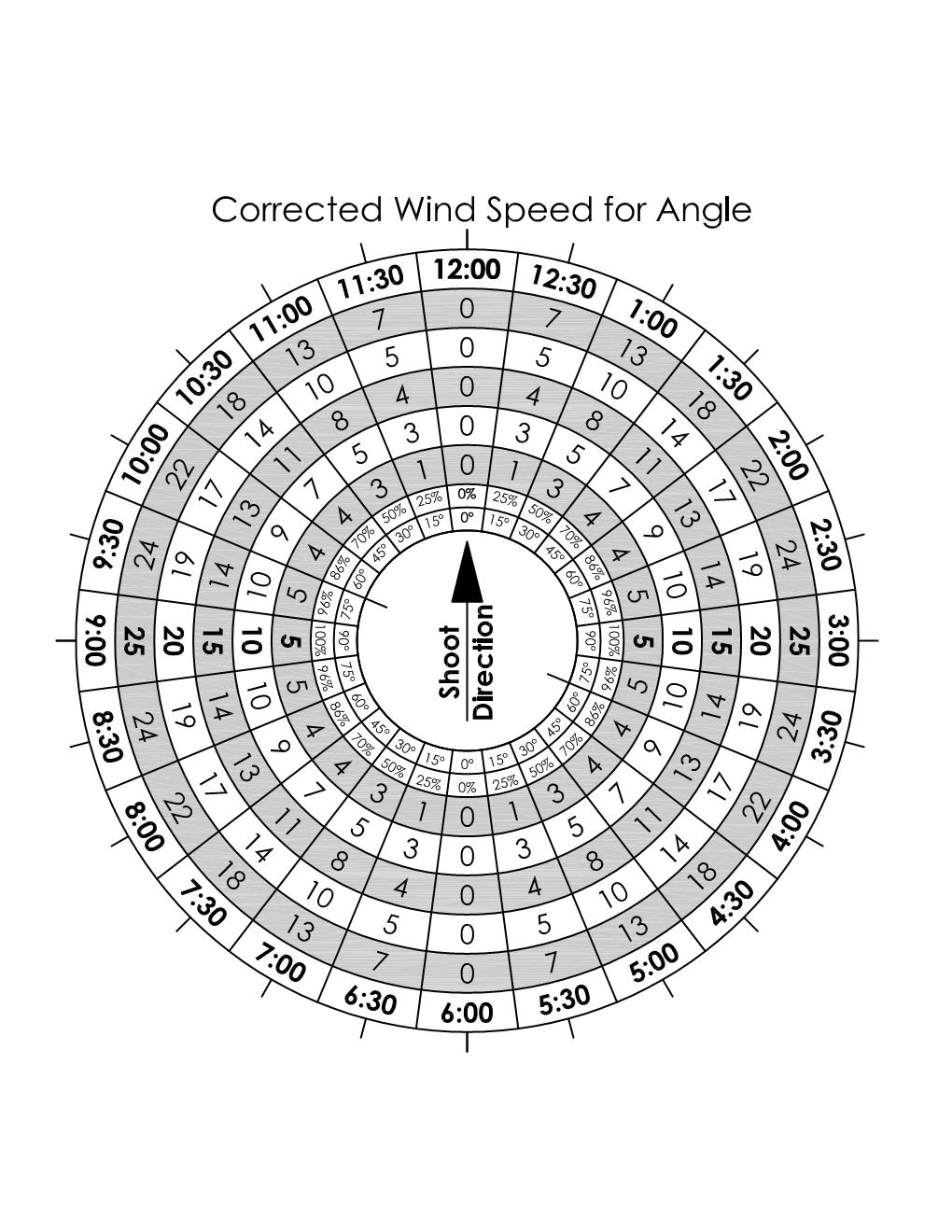
The Cross Wind Chart is born from a combination of several wind sources and ways to estimate your cross wind velocity. Taking cues from experienced individuals, printed texts, and other industries that deal heavily in wind, this format was created. This chart gives us the answers to cross wind value without doing any mental math. This wind chart is based on simple geometry and wind speeds and can be modified for any wind speed in any unit of measure.
Explanation of the Chart.
In the center is the “Shooting Direction” arrow. This shows the target is always at the 12 o’clock position. Point this arrow towards your target.
The first ring from the center gives the angle in degrees from the 12 o’clock position. The wind chart is broken up into ½ hour clock increments or 15 degrees angles.
The second ring from the center gives the percent of the wind speed taken to create the chart values. These percentages are derived from the sin of the shooting angle taken from the first ring. These are the same values that we used to get in the old wind roses.
The third through eight rings from the center of the chart are the numeric values for the wind speed correction values. Each ring is associated with a full speed wind value which is listed in the 3 and 9 o’clock positions. For example, the fourth ring of this chart is dedicated to a measured wind speed of 10mph (from any direction).
The outer ring of the chart gives the clock value for each direction.
How to use this wind chart
It is important to start with what this chart is used for. This chart gives us the cross wind value for a measured wind speed and direction. This chart is not caliber specific, units specific or for a defined range. Caliber, range and units are not a part of this chart. Only wind speed and direction. It does not matter if you are shooting a 22lr at 50yds or a 300wm at 2000yds or measuring in miles per hour, meters per second or light years per day (lypd). This chart is purely wind speed and direction based.
Step one – Measure or evaluate the actual wind speed. (Used your calibrated senses or a wind meter)
Step two – Point the wind chart “Shoot Direction” at your target and evaluate what direction the wind is coming from. (use your senses or a wind flag)
Step three – Find the wind speed you measured in the 3 or 9 o’clock position and trace that ring around to the direction of the wind. This is your cross wind value.
Step four – Find your wind hold for that cross wind speed in your data. I recommend the gun mph method inside 600 yds for very easy mental math. If you have a printed data sheet for your wind holds, you could use this as well.
Example 1 (easy one) – Target=600yds – 6mph gun in mils (9mph in MOA)
- The actual wind speed is measured at 10 mph
- The wind is coming from 2pm
- The Cross Wind Value is 9mph
- Wind Hold is 0.9 mil (3MOA) (mph method or from your drop data chart)
Example 2 (harder one) Target=600yds – 6mph in mils (9mph in MOA)
- The actual wind is measured at 22 mph
- The wind is coming from 11pm
- The Cross Wind Value is 11 mph
- Wind Hold is 1.1 mil (4moa) (mph method or from your drop data chart)
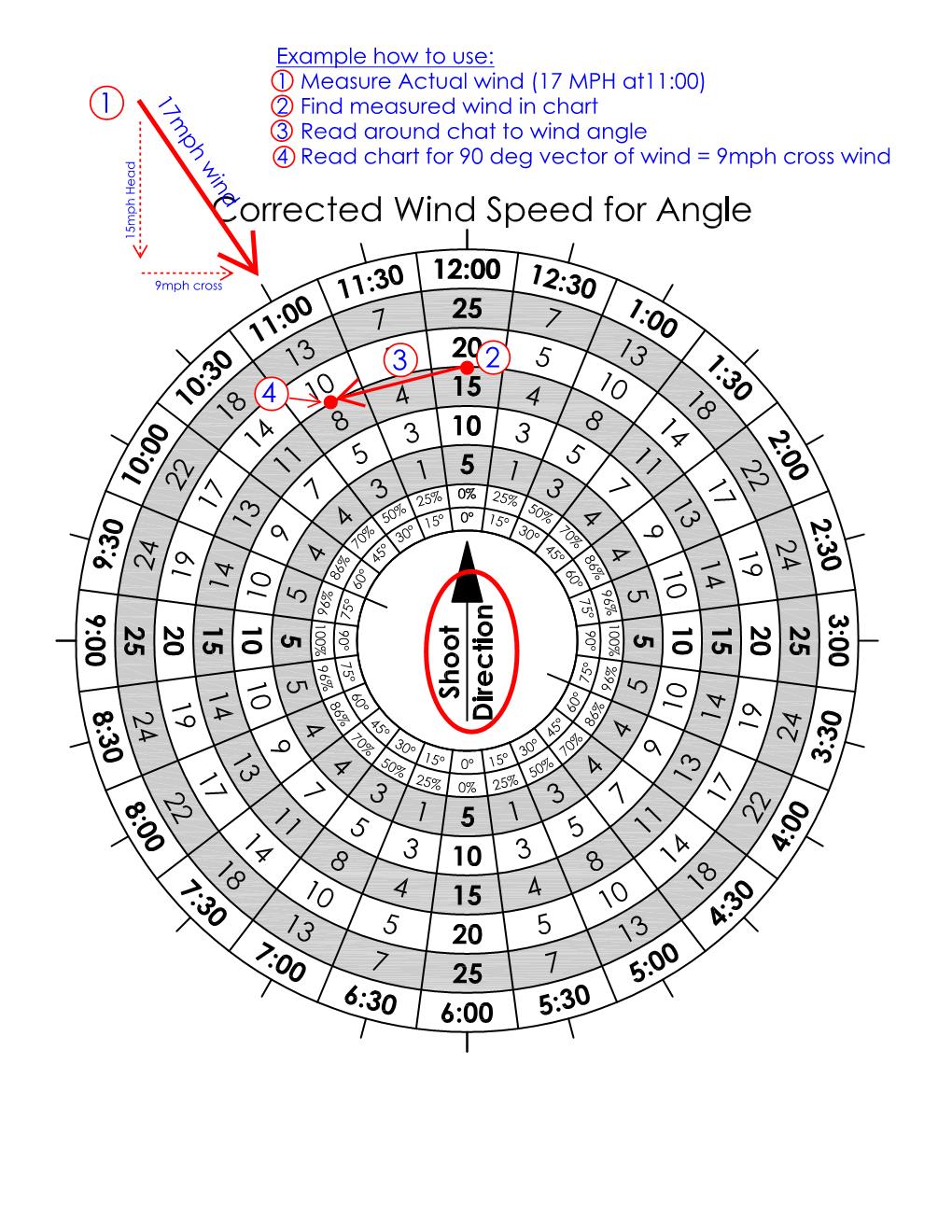
In the second example we had to estimate between 20 and 25 miles per hour on the 3pm values, then move around the chart to 11pm and again estimate between 10 and 13. We can use this same principle to evaluate between 11 o’clock and 11:30 if we can measure the wind to that small of an angle.
IF we re-visit the example from the original wind rose you will remember we said a 12mph wind at 10:30 o’clock is a 6mph cross wind. Using the Cross Wind Chart, we will find its closer to a 9mph cross wind. This 3mph difference could result in a miss at a 2moa plate at 800yds. This is a prime example of why we need a better wind rose in today’s precision shooting.
It’s important for new shooters to first understand how we get these cross wind values. Having a new shooter use the old wind roses to learn a little, then giving them the wind chart can be beneficial. In example 2 we could have used 50% of the wind value if we had memorized a basic wind rose and skipped step 3.
Using this wind chart can help us better evaluate the wind more accurately than the old wind roses. We can use it to quickly evaluate what our holds are for a switchy winds that have gusts and lulls. A wind chart is a quick simple visual reference rather than taking 2-3 minutes to get out your ballistic program when you have a short window to make a precision shot.
Downloading charts from the Sniper’s Hide Forum:
Links:

